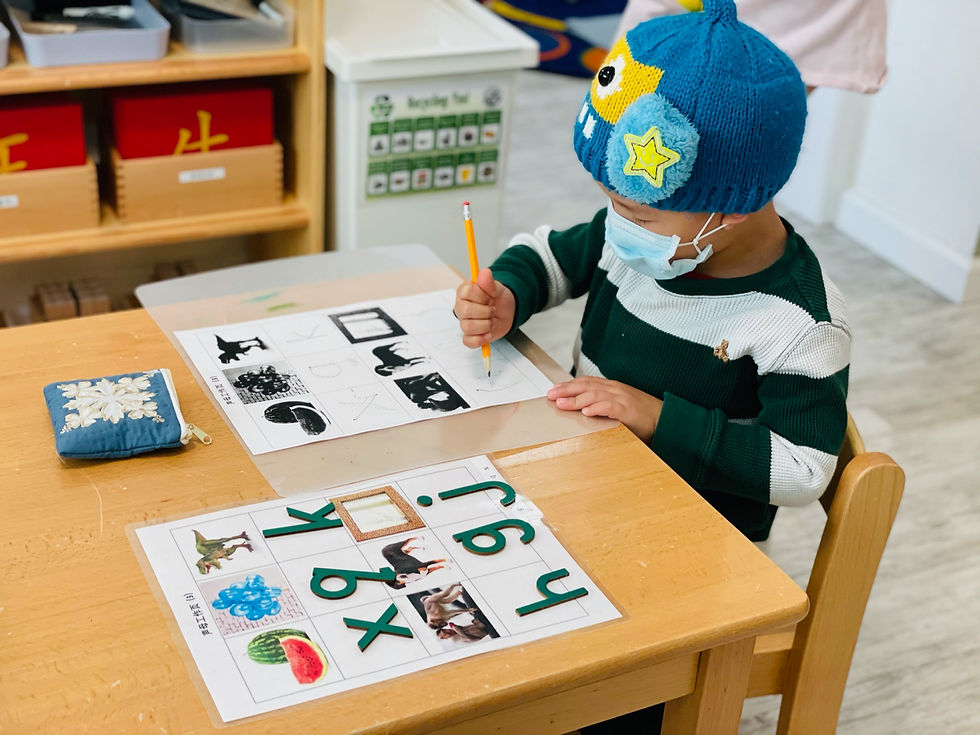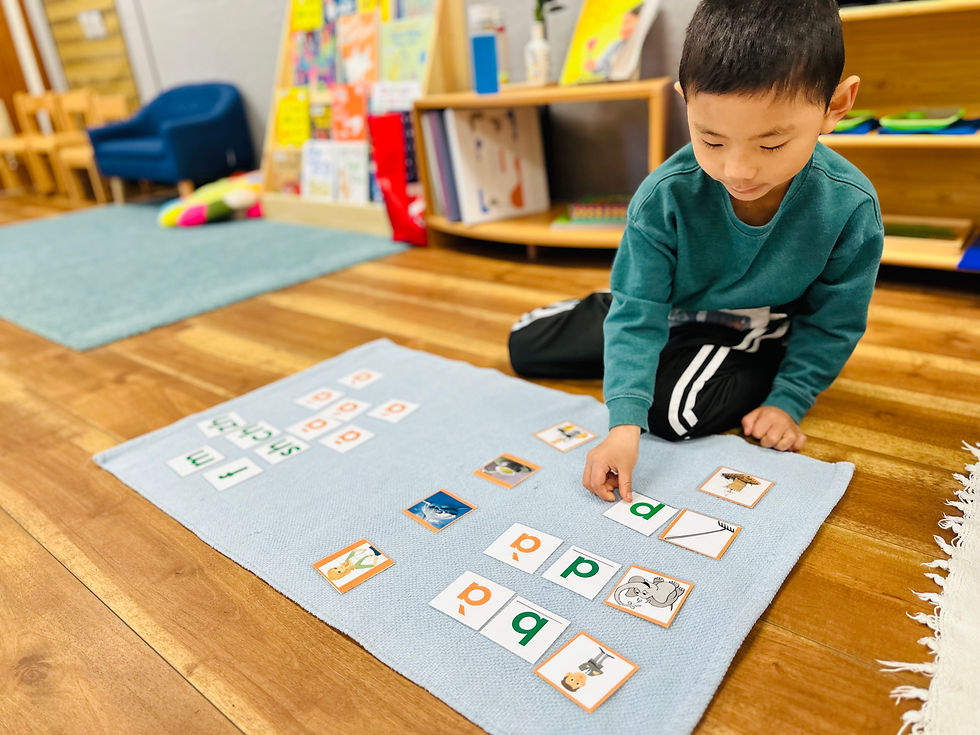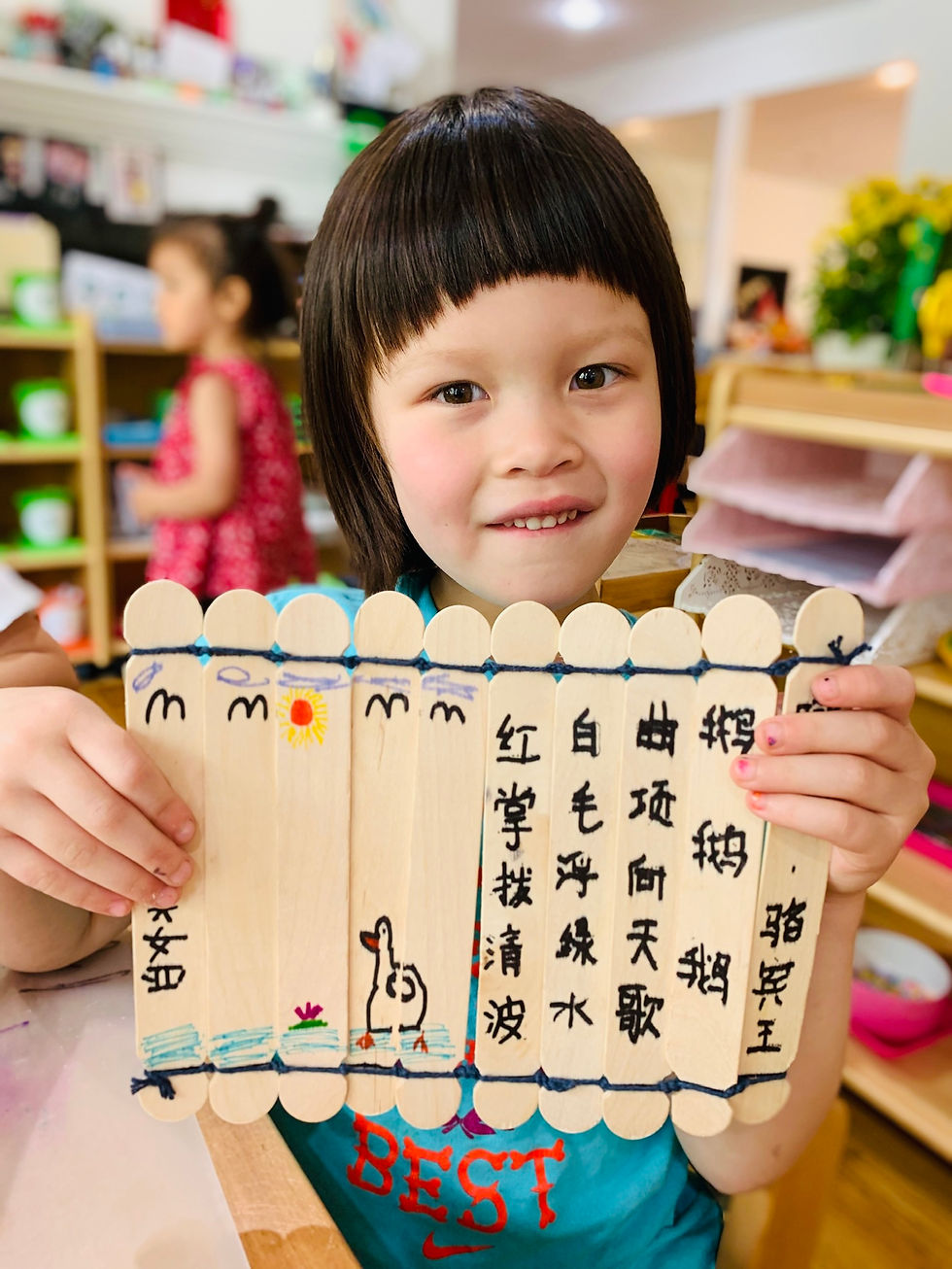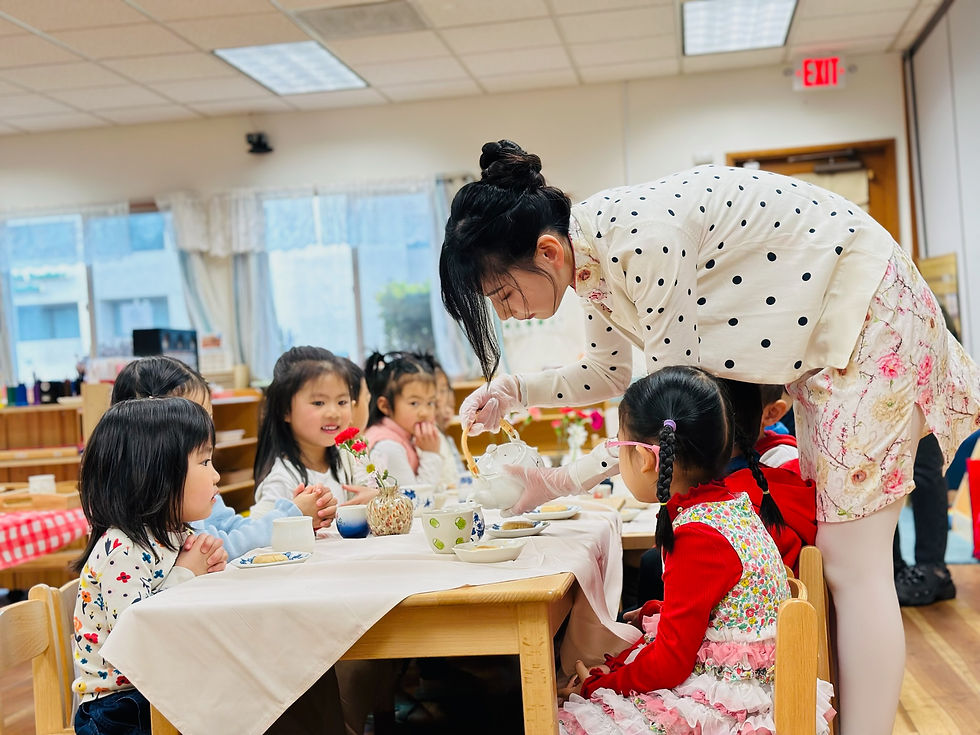At Shamrock Montessori, we are proud to offer one of the most comprehensive and thoughtfully developed Chinese language programs in the region. As a bilingual Montessori school with a deep respect for cultural diversity and language immersion, we have built a mature, research-informed, and experience-driven Chinese curriculum that grows with the child. Our program seamlessly integrates language, literacy, and culture, while following the natural progression of language acquisition as outlined in the Montessori philosophy.
Unlike many early childhood programs where Chinese is offered in a limited or isolated way, our approach is fully immersive and embedded into the children’s daily experience. From infancy through kindergarten, children are surrounded by a rich Mandarin-speaking environment—supported by trained native speakers, engaging materials, and consistent language routines. Over the years, we’ve refined a system that balances spoken fluency, character recognition, writing skills, and cultural appreciation, ensuring children develop not only competence but also confidence and joy in using the language.
Our curriculum begins with phonetic awareness. Children are introduced to initials, simple finals, and compound finals through engaging, multisensory activities. With sound games, visual cues, and oral practice, students develop a solid foundation in pronunciation and begin to recognize the building blocks of Mandarin.
Phonetics – Initials, Simple Finals, and Compound Finals


Once children are familiar with basic phonetic elements, we guide them through Pinyin reading. In this stage, students practice blending sounds to form complete syllables and words, a vital step towards fluent reading. Tones are introduced in an interactive and playful way that encourages accurate pronunciation and tonal awareness, both essential to understanding and speaking Mandarin.
Pinyin and Tone Recognition
What makes our Chinese Curriculum special?
Children transition from oral to written language by exploring Chinese characters. We begin with commonly used and simple characters, teaching stroke order and structure through hands-on practice. Students also learn about radicals and pictographs to understand how meaning is formed within the written system. These exercises not only build writing skills but also foster a deeper connection with the language.
Chinese Character and Writing Skills


As students progress, we introduce more advanced language activities designed to expand vocabulary and sentence structure. These include spelling practice, picture description, sentence sequencing, and writing short compositions. Children also explore definitions, synonyms, antonyms, rhyming words, quantifiers, and even begin composing simple poems. These experiences promote expressive language, independent thinking, and a love for storytelling.
Advanced Language Development
Chinese literature is brought to life through exposure to classical poetry and idiom stories. Children enjoy reciting famous verses, learning about their meaning and rhythm, and participating in story-based dramatization. These cultural treasures offer children an early appreciation for Chinese literary heritage and provide memorable language experiences.
Chinese Poetry and Idioms


Our Chinese curriculum places a strong emphasis on cultural immersion. Children engage with Chinese music and instruments, traditional visual arts such as calligraphy and painting, and explore iconic architecture like temples, gardens, and bridges. Culinary learning is also included, with cooking activities and cultural food tastings tied to seasonal festivals. Throughout the year, we celebrate Mid-Autumn Festival, Lunar New Year, and Dragon Boat Festival with songs, crafts, and storytelling—bringing language and culture together in meaningful and joyful ways.

.jpg)